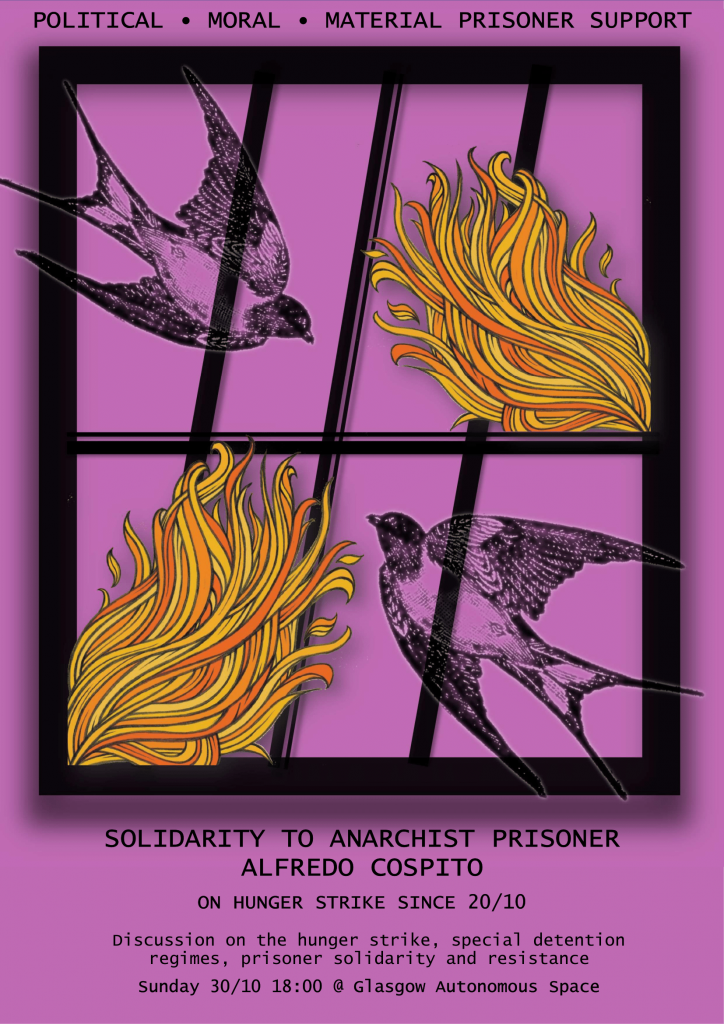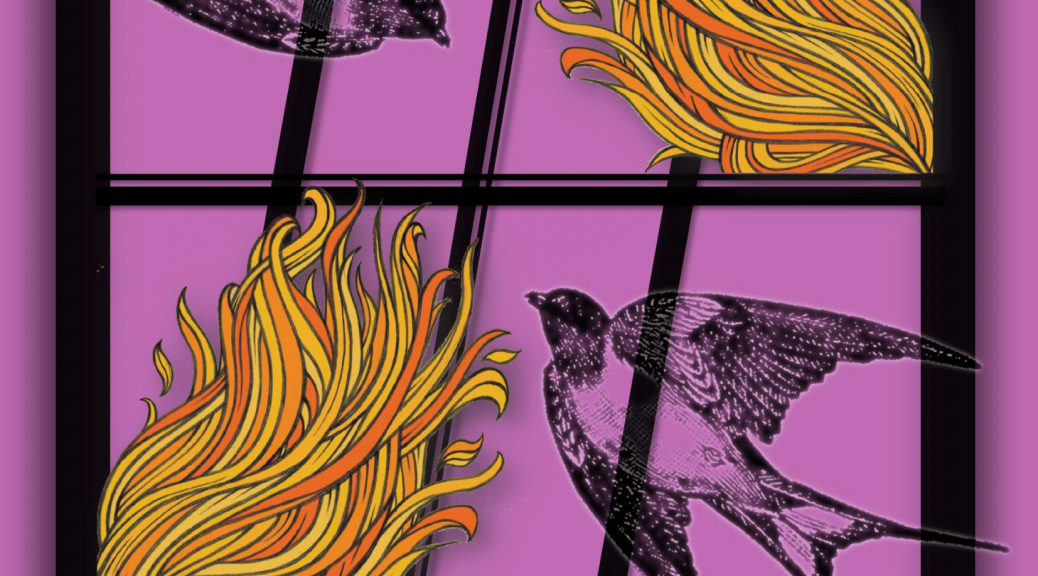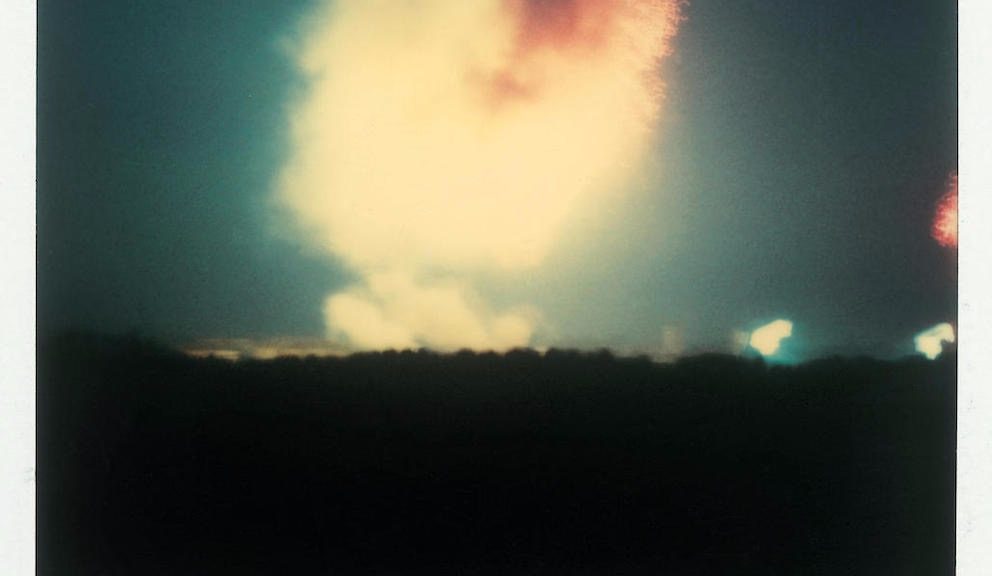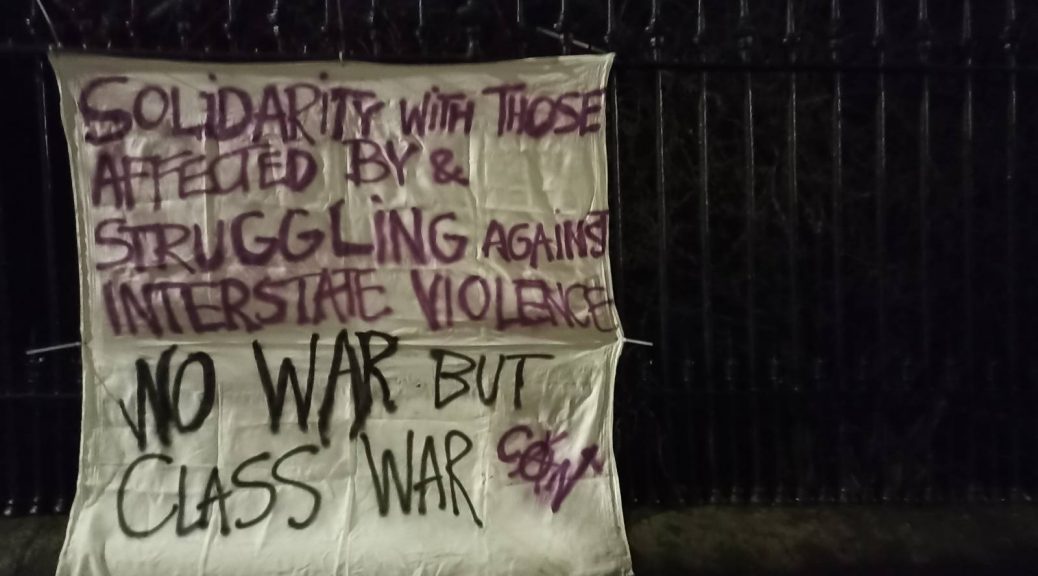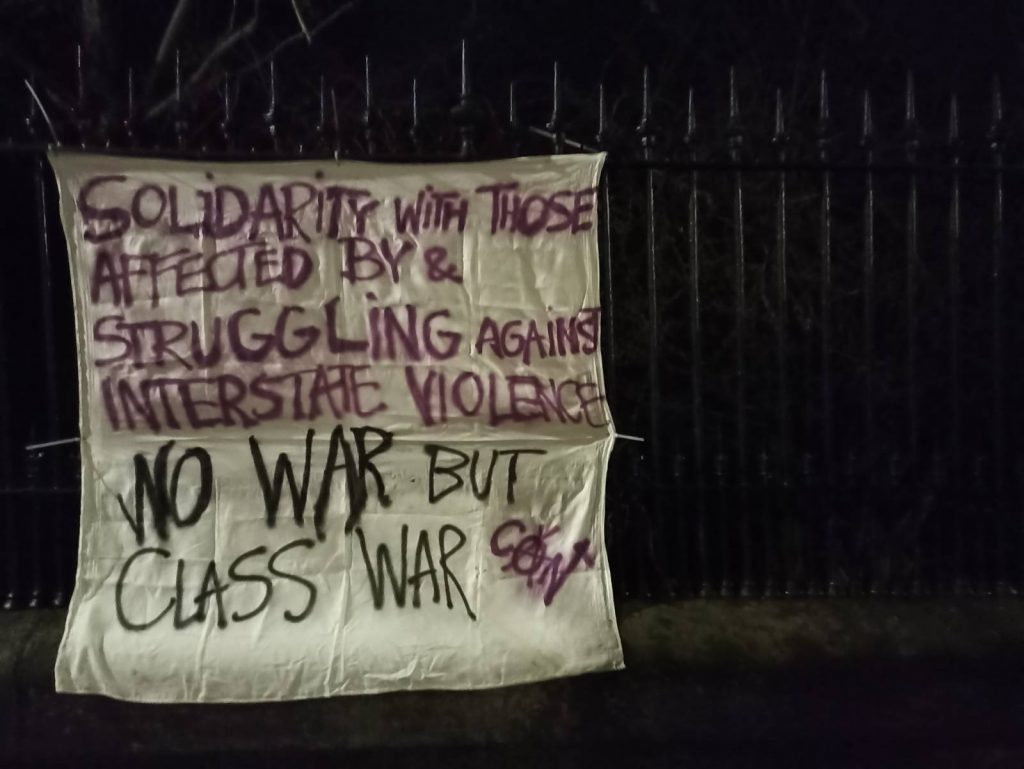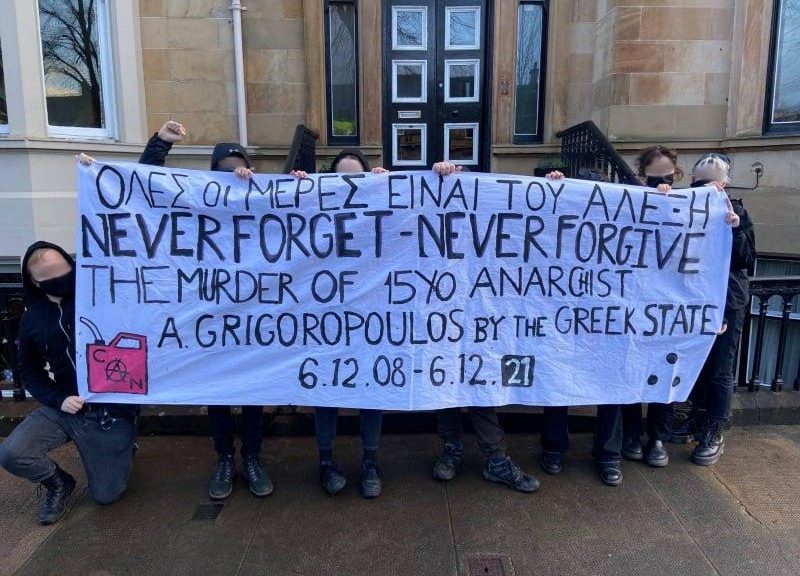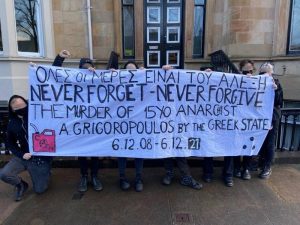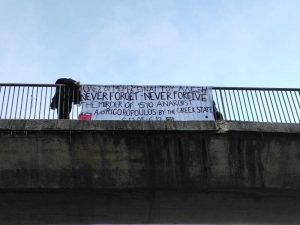Firstly, we would like to update you on the health of the comrade. It was recorded on the 19th of June that he has lost 21% of his body weight, reaching a total weight of 57.5kg (just 9 stone) and has now been transfered to a hospital wing in Lamia, as, reaching 30 days of hunger strike, he is in danger of hypoglycemic shock and permanent damage to his health. His partner’s requests for visitations and updates on his health are rejected daily. In his cell in the Lamia hospital, he is not even allowed a television, due to a supposed fear that he would commit suicide with the cables, a ridiculous notion that identifies hunger strike with suicidal tendencies, a tactic that is often used by states to justify the murder of hunger strikers.
Despite the critical condition of Giannis Michailidis, on the 20th of June, this past Monday, the Judicial Council of Amfissa rejected, once more, the appeal for release from the comrade’s legal team. In response, solidarity collectives have called for an escalation of the struggle, which includes calls for a panhellenic and international day of solidarity on the 24th of June, where central demonstrations will take place in all major greek towns and cities, and with solidarity events such as this one, as well as demonstrations and actions targeting Greek state interests and institutions, such as embassies, all over the world.
Moving on, we’d like to highlight some key solidarity actions going on in Greece and the general approach that the anti-authoritarian movement takes when presented with situations such as this. We see this as an opportunity to compare and contrast our organising methods, and explore ideas to some degree foreign to UK organising tactics – and through this process, hopefully, better understand our shared goals and what anarchist praxis means to us – and finally, with the understanding that we are different from those who came before us, facing different threats and with different means of resistance available to us, imagine the possibilities – what more could we be doing, in what ways?
First of all, a few words about the movement’s response to the situation. Support for GM’s struggle has taken many different forms, ranging from everyday propagandising, such as postering and banner drops, and non-violent direct action aiming to disrupt the flow of capital, such as occupations and blockades,to mass demonstrations and violent direct action, such as sabotage and destruction of property. Additionally, counterinformation has played no small role, with news, calls to action and claims of responsibility posted on public forums such as Athens Indymedia serving both as sources of inspiration and an organisational aid for the wider anarchist movement and its loose networks. As a result of this pre-existing infrastructrure, setting up open call meetings to organise collective actions in response to specific sets of circumstances (in this case, the hunger strike) is possible. Meetings like these are where our collective rage is transubstantiated into realisation of our power as we escape the grip of fear and disappointment – it’s where it multiplies and manifests itself in the plans we make with our accomplices.
Of course, there is the question of whether, through these organising methods and coordinating bodies, all anarchists involved reach unity of thought. The answer is clearly no; however, individual collectives coordinate through these big-tent groups, such as the Solidarity Assembly, which allow for mass action and give the movement direction, and then largely preserve their own operational autonomy for smaller actions. This is why we see a plethora of actions organised solely by individual formal collectives, insurrectionary cells, and even friend groups. This constant flow of motion allows people to help by any means they feel comfortable with, and this organising structure is less conducive to infiltration.
All in all, the presence of permanent collectively-managed structures, by and for the anarchist movement, essentially builds an extended circle of organised anarchist militants within the country, the importance of which cannot be understated. Examples of such structures include various squats and free spaces (especially in universities, which, despite legislation abolishing university asylum, are still significantly used by the movement for organising), as well as Athens Indymedia, and the Fund for Imprisoned and Persecuted Militants, for which we are fundraising today. The fund is a permanent structure of financial support for political prisoners, and currently 26 political prisoners, including the hunger striker Giannis Michailidis, are being supported by the fund. We urge you to support the cause of the fund as much as you can, as the repression of anarchists is quickly becoming more and more sweeping and brutal.
In the UK, on the other hand, and specifically in Scotland, the situation is quite different for a series of reasons, some of which we will examine. Firstly, we operate within a completely different legal context; direct action is punished more heavily, and clashing with the police, as we saw in the Bristol clashes in March 2021, carries the risk of imprisonment for multiple years. The creation of movement spaces and infrastructure is also hindered by this legal context, something which goes back to the genocidal Highland Clearances in Scotland. Additionally, state surveillance in Britain is significantly more sophisticated; both in the form of technical counterinsurgency measures such as,face recognition tech-enabled CCTV, which often acts as a deterrent for direct action, and in more insidious forms such as the infiltration of political organisations, as demonstrated in the so-called Spy Cops scandal. However, this does not mean that we take a pessimistic view of the local movement, and its potential for development. The Baile Hoose occupation, despite heavy police presence and attempted repression,as well as its own political failures, held throughout the duration of the COP26 conference and was abandoned on the occupiers’ own terms. The successful Kenmure Street anti-immigration raid resistance in May 2021 relied on the significant reflex action of, among others, local anarchists, who were the first on the scene. Such direct action has since been replicated throughout the UK, most recently in Edinburgh and London. A more insurrectiary tendency within anarchism has also existed in Britain, focused mostly around the South-West of England, where cells of the Conspiracy Cells of Fire, the Earth Liberation Front and the Informal Anarchist Federation operated in the previous decade. We propose a more evident unity of action within the movement, based on resistance, mutual aid and solidarity, through the creation of, and continued support for, anarchist infrastructure. States hold the monopoly on violence and have come to expect no reaction, they murder us and expect us to sit still; it is in our hands to prove them wrong.
Finally, it may seem that hunger strikes, political prisoners and armed direct action are far, far away from modern British reality. However, the British state has an infamous record of exterminating hunger striking prisoners; in the early 1980s, with the death of 10 hunger striking members of the Irish Republican Army and the Irish National Liberation Army following the withdrawal of their Prisoner of War status, and in 2001, of the animal rights activist Barry Horne. Additionally, the state of exception for political prisoners, discussed in the call by the Solidarity Assembly, is also present in Britain: this can be seen in the case of anarchist Toby Shone, who was arrested through the international anti-terror Operation Adream. Despite the fact that all political charges, which originally sought to connect Toby with armed groups, including the Conspiracy Cells of Fire, were dropped, and he was only charged with drug-related offences, anti-terrorism cops attempted to impose a draconian Serious Crime Prevention Order on him upon his release, which would allow for oversight and control over all of his communications and finances. Thankfully, the Serious Crime Prevention Order was rejected by the court, and Toby will be truly free from Operation Adream following his release in the next few months. Another example from the North of Ireland is the ongoing suppression of anarchist and former Dissident Republican John-Paul Wooton, one half of the Craigavon Two political prisoners, whose release has been repeatedly denied following his arrest on weak ground for the ambush and murder of a police officer. He was 17 at the time, and has today spend almost half his life in prison. It was recently uncovered that the solidarity campaign for him and the other arrested for it, Brendan McConville, “Justice for the Craigavon Two”, was infiltrated by an undercover cop, showing just one of the ways that the state organises its political control. Support of the struggles of political prisoners should be a central aspect of modern anarchist praxis, and this is an area that we want to focus on as our collective matures.
The aim of this event is not only to inform folk of the hunger strike and surrounding movement, or to raise funds for political prisoners in Greece, but also to bring pressing matters to the attention of local anarchists surrounding our own organising practices. Let us take polymorphic, direct, joyful action to move from activism to militancy, to demand nothing less than everything!
“Woe to those who will accept prison as a condition of life,
and from the brightest sunlight, the smallest ray”
– The rallying cry of the Alikarnassos prison uprising in 1990, referenced in the announcement of G. Michailidis’s hunger strike
THE PASSION FOR FREEDOM IS STRONGER THAN YOUR PRISONS – FREE HUNGER STRIKER G. MICHAILIDIS
Until Every Prison Burns – Clydeside Anarchist Noise.
